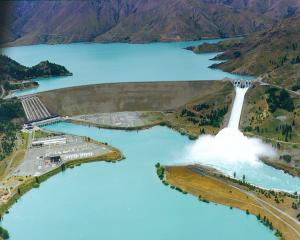One of Oamaru's historic buildings which links the town to the establishment of New Zealand's frozen meat industry at Totara has been declared dangerous by the Waitaki District Council.
The council owns the building on the Oamaru foreshore, just north of the mouth of the Oamaru Creek.
It has been found to be unsafe and dangerous to the public after being assessed by structural engineers.
The council's assets group manager, Neil Jorgensen, said the building, with a category 2 rating by Heritage NZ, would be fenced off and labelled to warn the public of the danger.
The building was not occupied and had been used only for storage.
It would remain cordoned off for the foreseeable future until the council had an opportunity to consider what any next steps would be.
It was too early to say what those options could be.
The building had been in a dilapidated state for some time, but that had accelerated in recent years and reached a point where it was a hazard.
''If one of the trusses collapsed, it would bring down the whole building and, if anyone was inside . . .''
The council served notice on itself under the Building Act, classifying the freezer building as a ''dangerous building''.
Fencing off the building was one of the requirements of the notice to protect the public from harm.
''It's important that, while there isn't currently public access into the building, the public are aware of the danger,'' Mr Jorgensen said.
At various stages there have been proposals to restore and use the building, including one where it would have become a visitor attraction based on the frozen meat industry and linked it to Totara Estate.
A Heritage NZ summary of the building said it opened in February 1886, and was believed to be New Zealand's oldest surviving freezing works.
The relatively unaltered state of the building made it an important example of an early freezing works complex.
Architect Thomas Forrester designed the works and it began processing meat on February 2, 1886.
Sheep were slaughtered at a plant at Eveline then brought to the freezing plant, which could process 300 sheep daily and store 12,000 frozen carcasses.
As demand rose, the building was added to.
In 1906, general manager William Murray recommended that the Oamaru works close and that North Otago stock be railed to Burnside or Smithfield, in Timaru.
The Oamaru plant had become antiquated and inefficient.
Another five years passed before the company decided to rebuild at Pukeuri, north of Oamaru.
The new plant opened on March 5, 1914, and still processes meat today.













